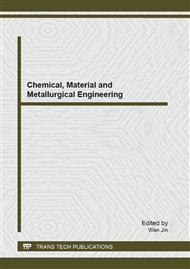p.539
p.543
p.551
p.557
p.564
p.570
p.575
p.581
p.588
Effect of Tube Size on Flow Pattern of Air-Water Two-Phase Flow in Horizontal Tubes
Abstract:
Aiming at the diameter range of boiler water wall tubes in practical engineering application, the air-water two phase flow pattern in horizontal tube was experimentally investigated in tubes with different inner diameters of 20mm and 8 mm under atmosphere condition. The stratified flow, wave flow, plug flow, slug flow, annular flow, bubbly flow and mist flow were observed in the tubes. Most of the experimental points agree well with the Baker flow pattern map when they appear in the map. With the experimental results, the range lines between the flow patterns were suggested for the tube of 20mm in inner diameter as well as 8mm. As the water superficial velocity increases, the annular flow transforms into mist flow at a decreasing air superficial velocity. The two phase flow patterns transition line is similar in tendency for different tubes. The slug flow transforms into annular flow at an increasing air superficial velocity as tube diameter decreases. The stratified flow transforms into slug flow at an increasing water superficial velocity as tube diameter decreases. The transition line between plug flow and slug flow is independent of tube diameter.
Info:
Periodical:
Pages:
575-580
Citation:
Online since:
August 2013
Authors:
Keywords:
Price:
Сopyright:
© 2013 Trans Tech Publications Ltd. All Rights Reserved
Share:
Citation:


